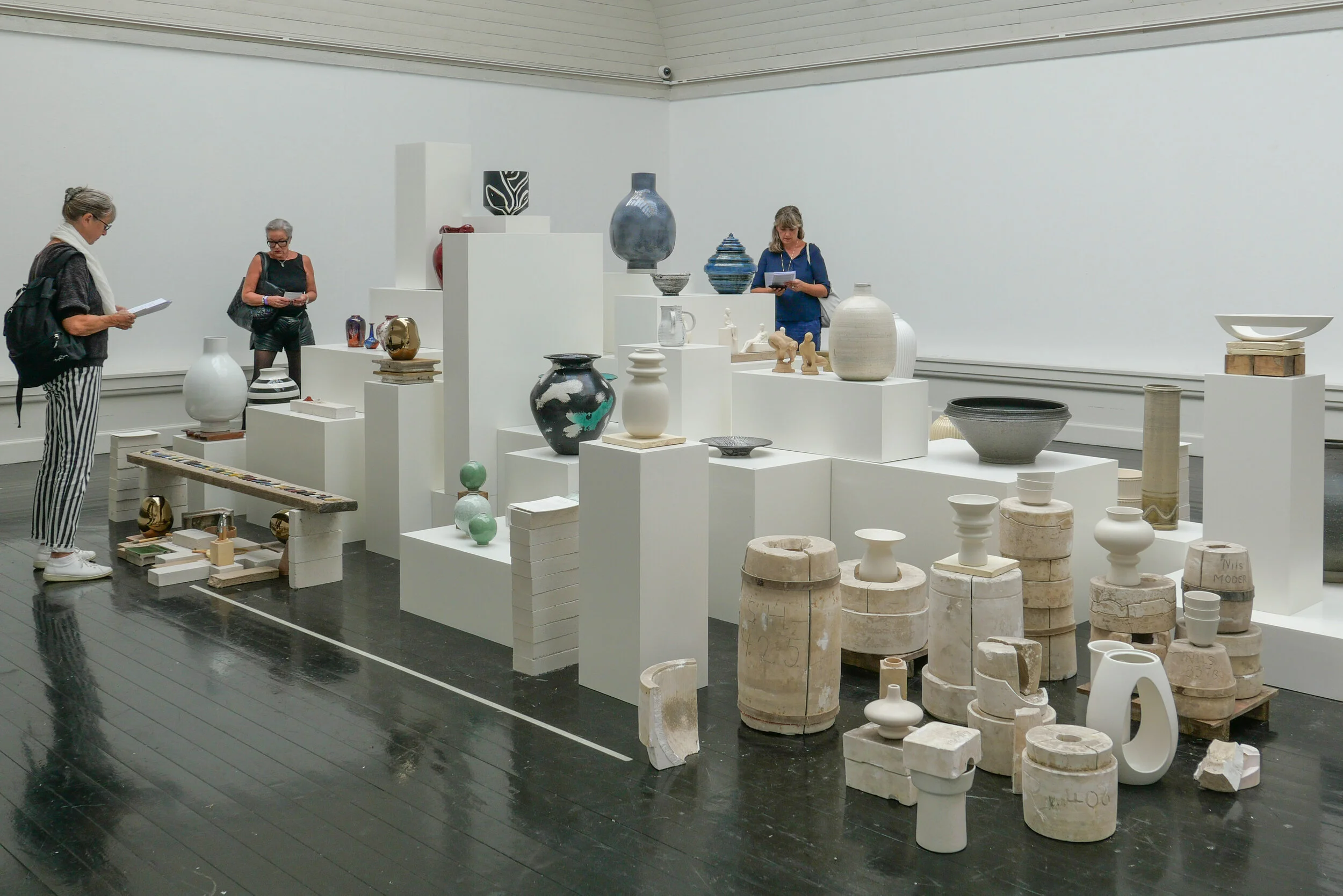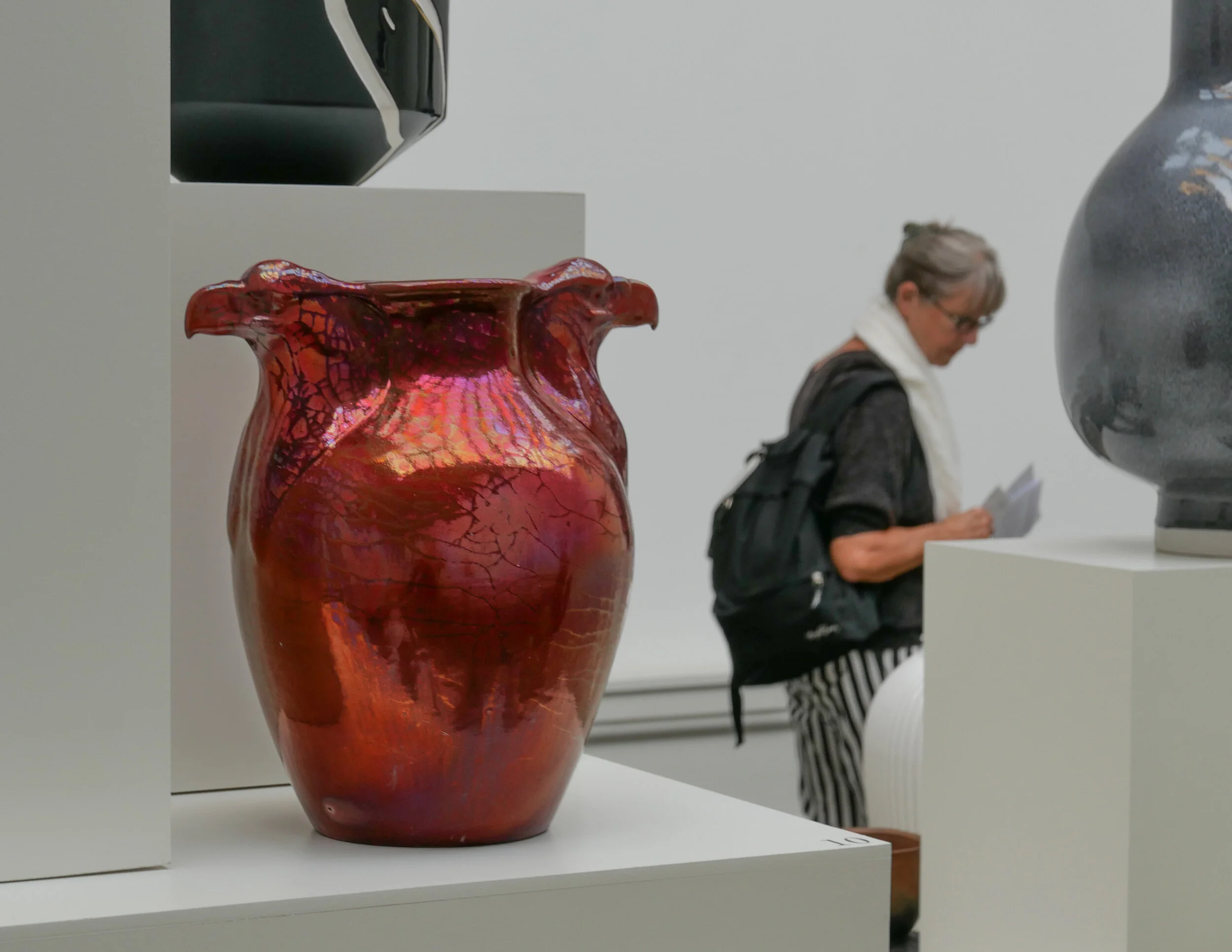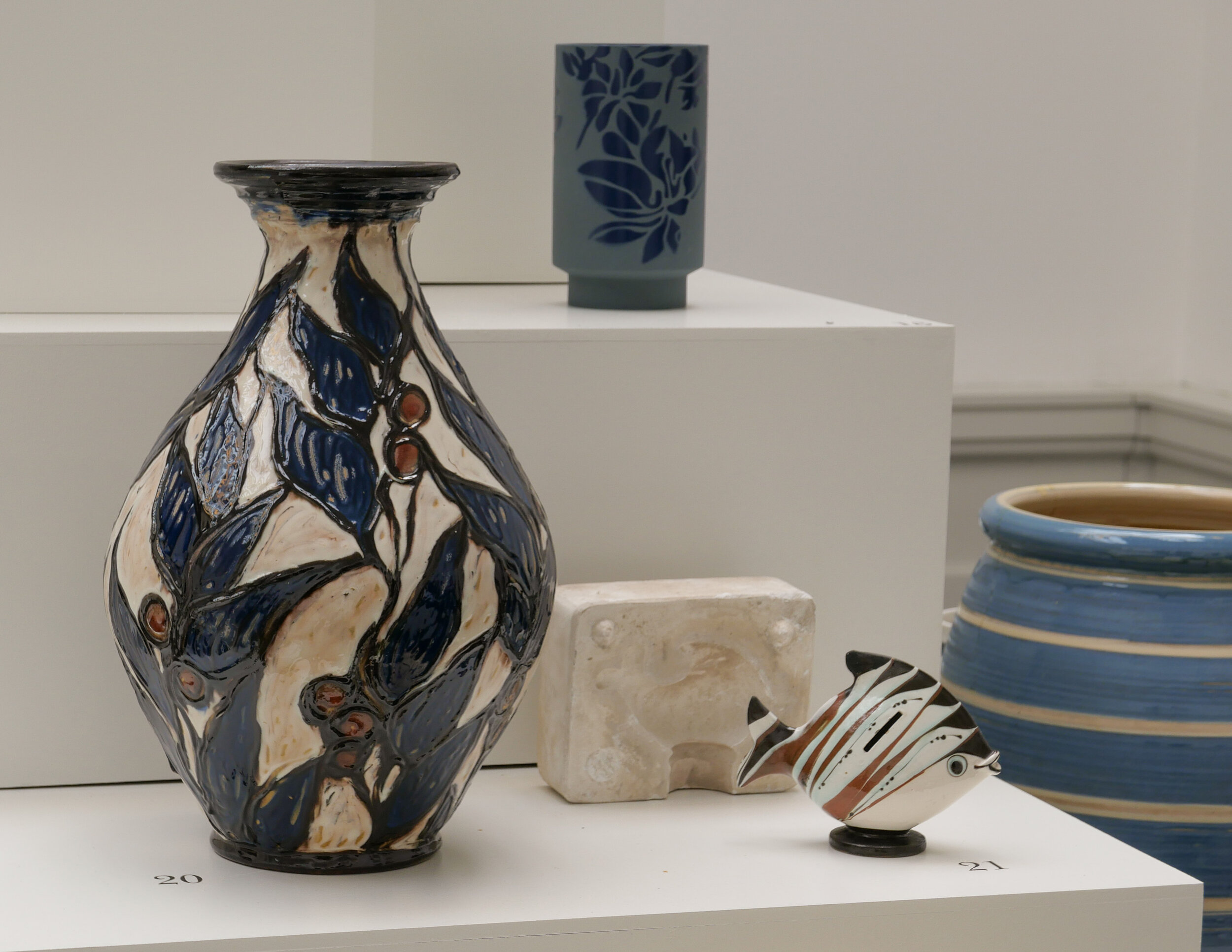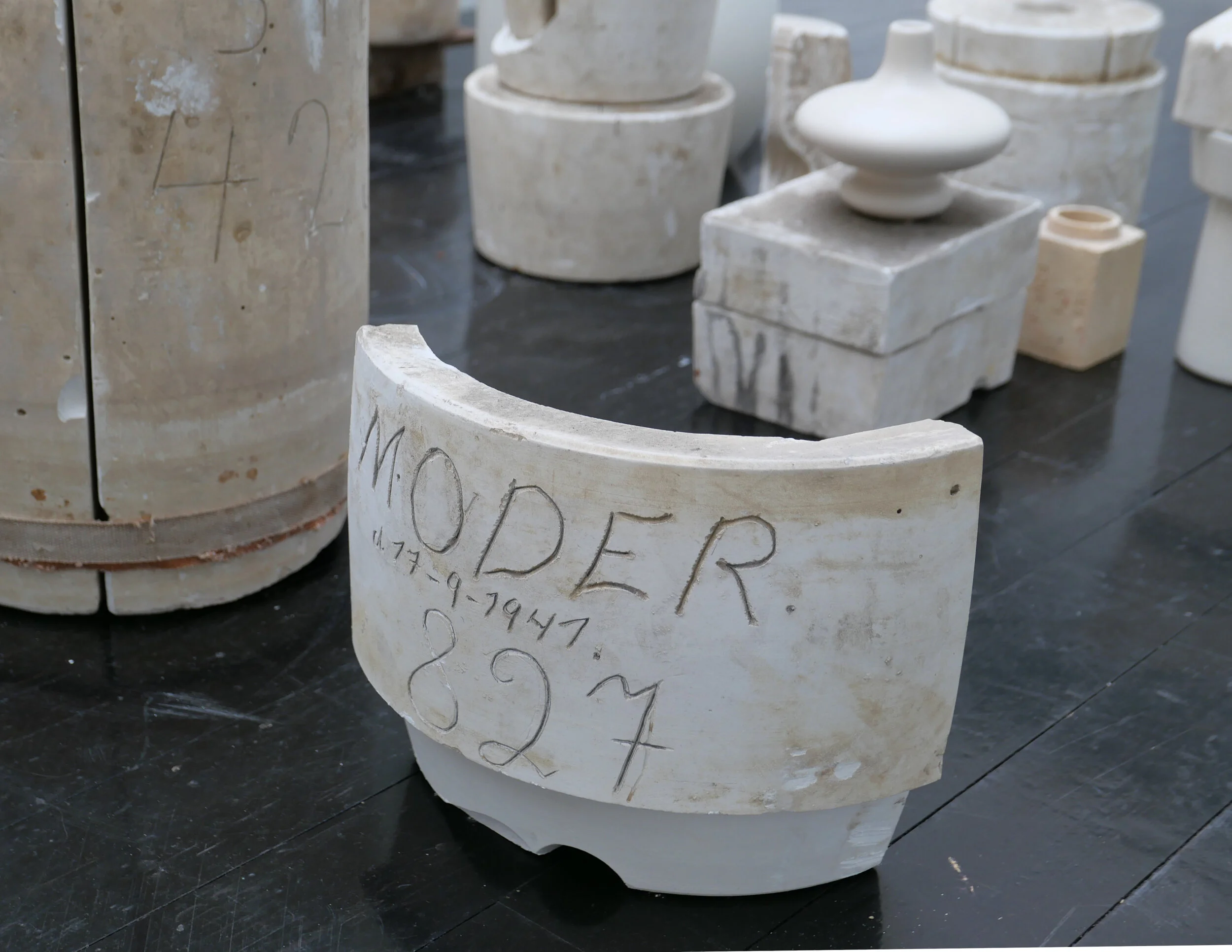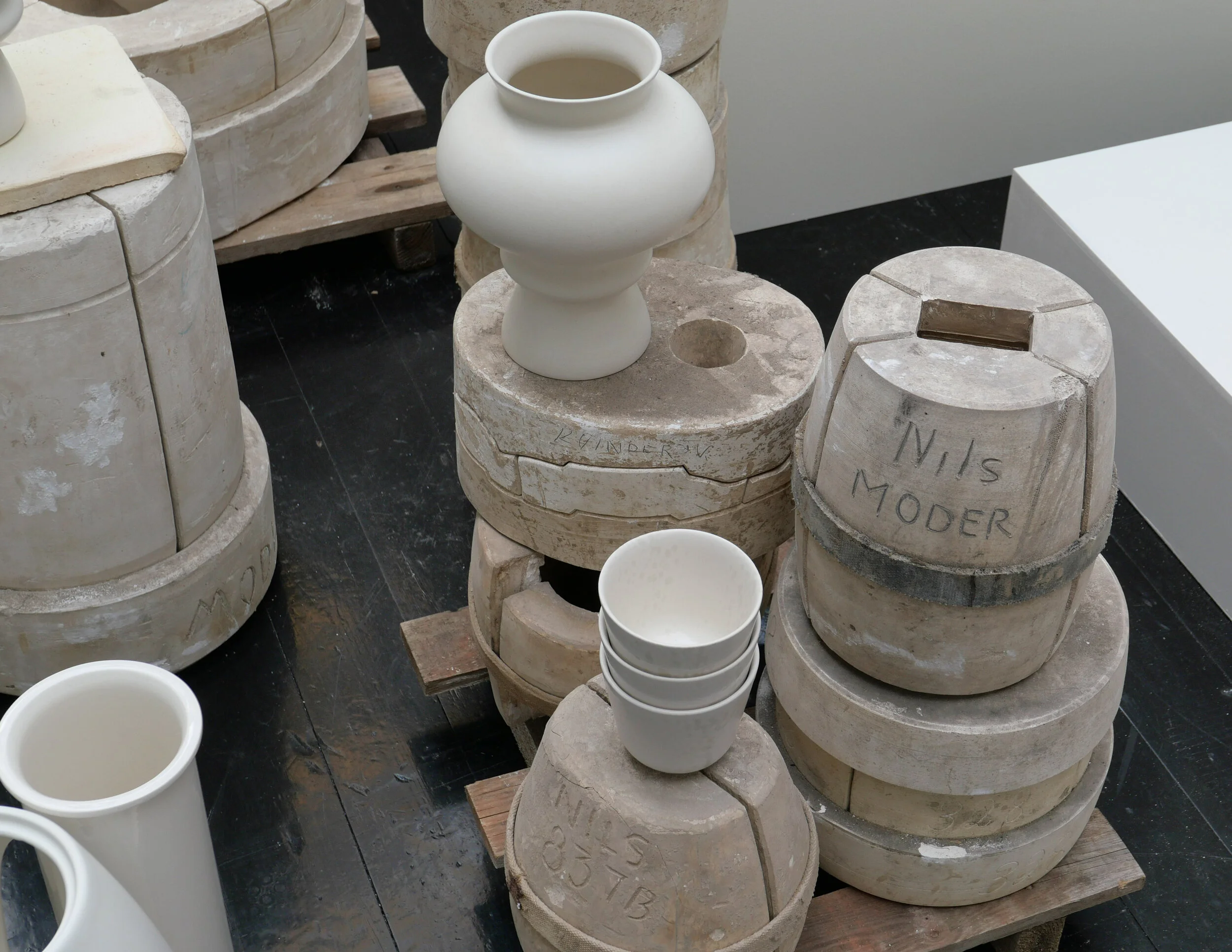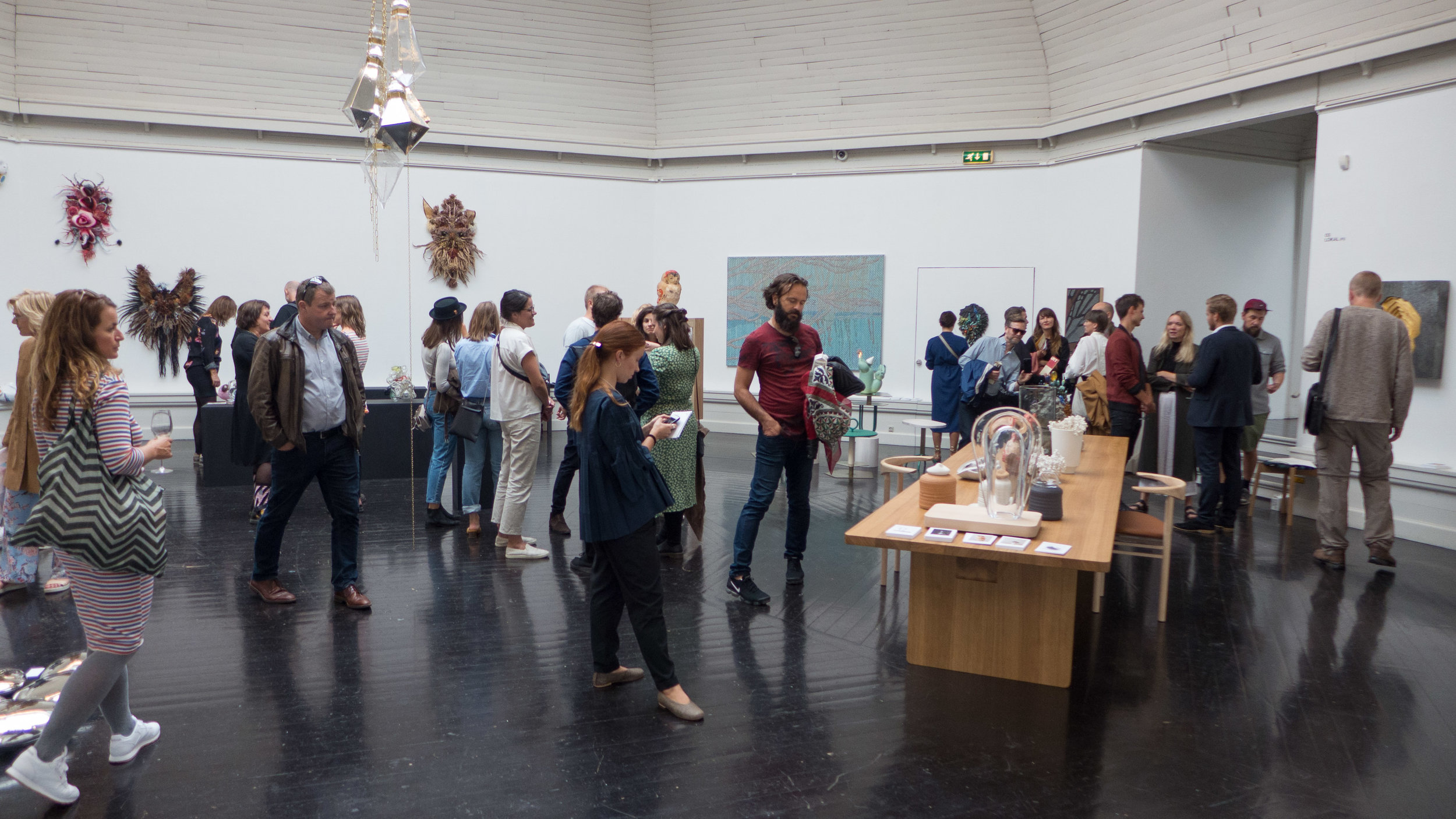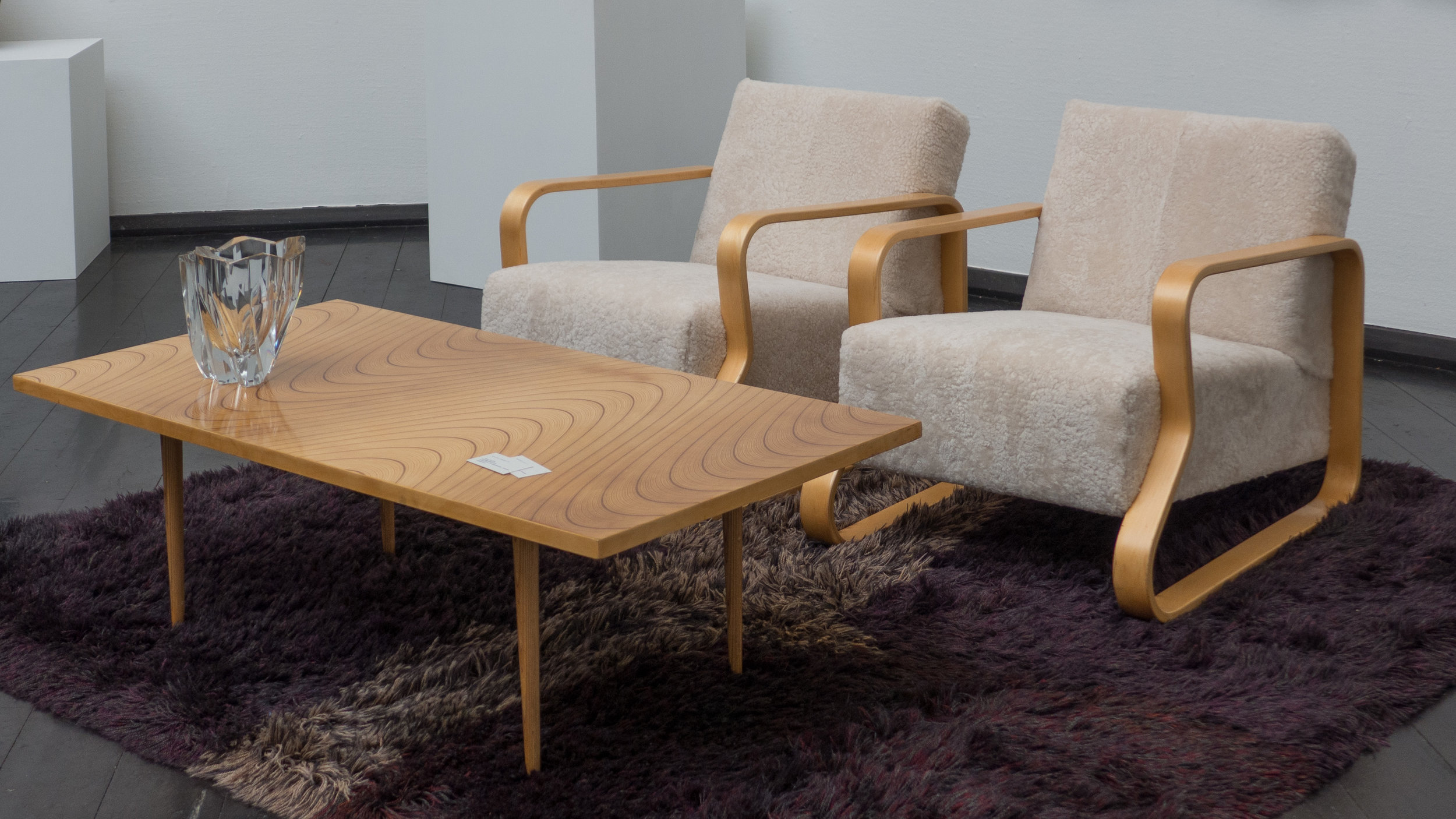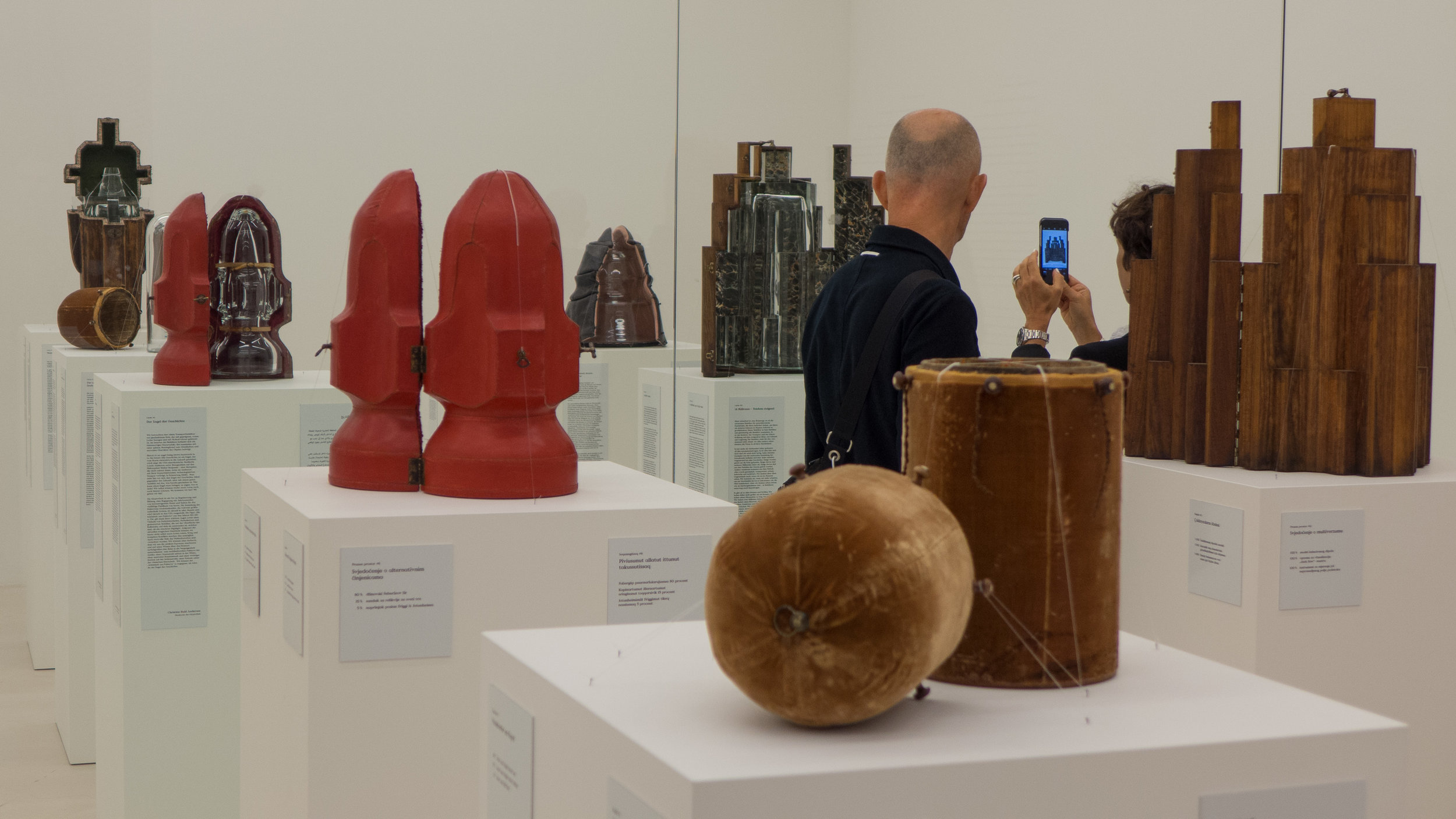Kähler at CHART Design Fair August 2019
/The Kåhler pottery was founded by Joachim Christian Hermann Kähler in 1839 and this exhibition at Den Frie - for the CHART Design Fair - is in part to mark their 180th anniversary.
Initially, Kähler produced stoves and cooking pots and kitchenwares. Two sons - Hermann A Kähler and his younger brother Carl Frederik Kähler - took over the factory in 1872. After a fire in 1875, a new factory was established and the company began producing finer ceramics, particularly vases, and began working with ceramic artists including H Brendekilde, L A Ring and Carl Lund and later Karl Hansen Reistrup and then Svend Hammershøi who became the artistic director of the company.
Kähler experimented with shapes, glazes - particularly a hallmark deep red lustre - and with decorative techniques of painting by hand.
The exhibition here showed a range of their pieces through the history of the factory that show how, as a commercial company, they had to respond to changes of fashion but also, by employing well-established and talented artists, they could also set certain styles.
Plaster casts for slip-pouring moulded, rather than thrown, pieces and sample strips of glaze colours gave some insight into the technical aspects of the high-quality ceramics.
In 1974 the factory was sold to Næstved municipality and then passed through a number of owners including Holmegaard but since 2018 has been part of the Rosendahl Group.


